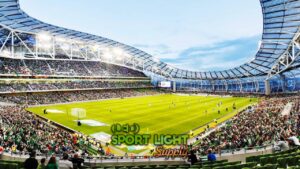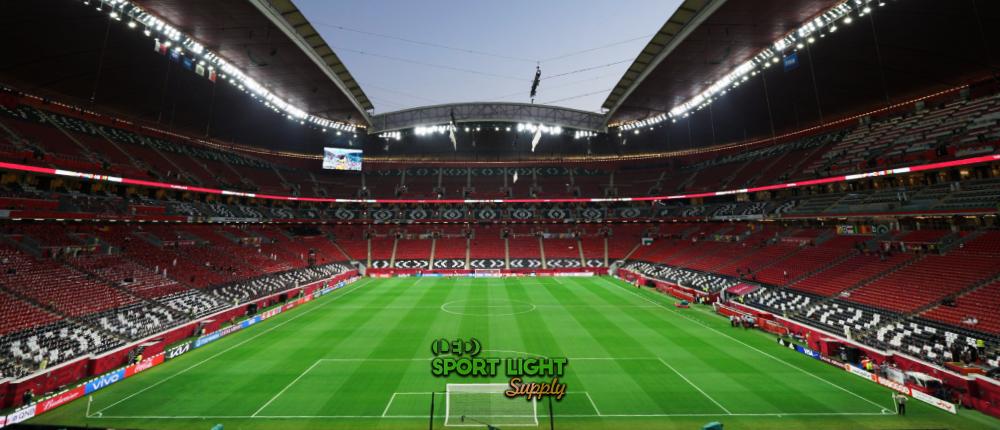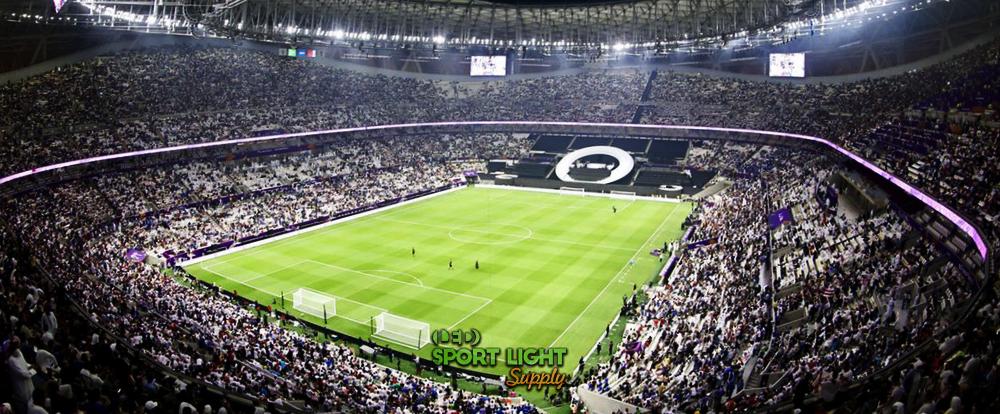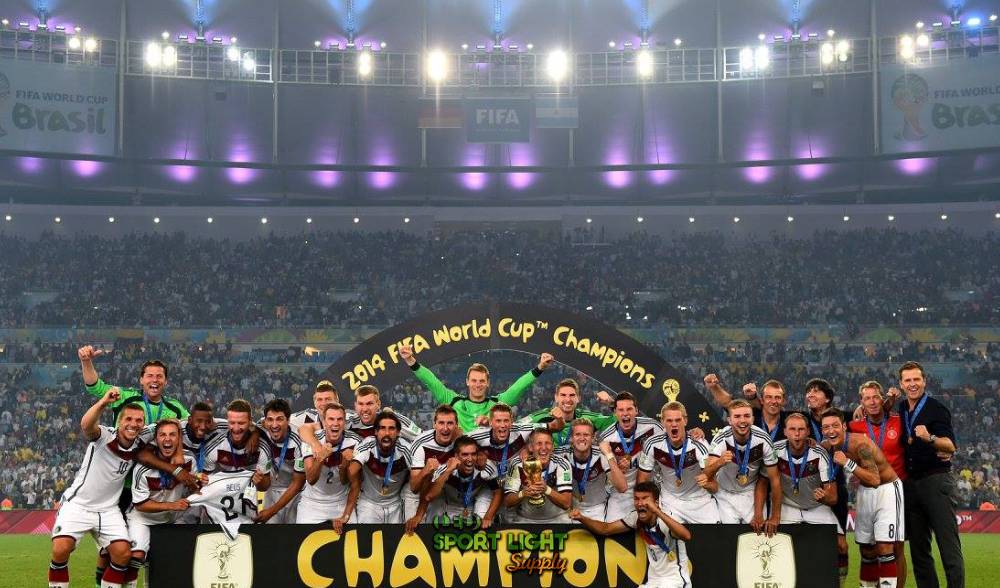
As the World Cup is one of the most-watched sporting events globally, lighting systems have evolved significantly over the years. The lighting design of the stadiums must take into account various factors, including visibility, player performance, fan experience, and broadcast quality. With each World Cup, the technology used to light the stadiums continues to improve, making the event more immersive and professional.
Table of Contents
ToggleLighting systems in FIFA World Cup stadiums are designed to meet a variety of requirements, ranging from player visibility to broadcasting needs. Traditionally, stadiums used metal halide lamps, which provided bright, uniform lighting suitable for large spaces. However, with the advancement of technology, newer options such as LED lighting have become more prevalent in recent tournaments.
LED lighting systems have become the preferred choice due to their efficiency, longer lifespan, and ability to be finely tuned to meet specific lighting conditions. Compared to traditional metal halide lamps, LEDs consume less power, require less maintenance, and provide more consistent lighting across the entire stadium. Furthermore, LED lights can be controlled to adjust color temperatures, creating the desired ambiance for different events. Some stadiums have also experimented with fiber optic lighting to create unique visual effects, especially in non-playing areas.

To meet the standards set by FIFA and ensure a high-quality viewing experience for both in-person and remote audiences, specific lighting requirements must be adhered to. These include the illumination of the playing field, stands, and other areas of the stadium. A common challenge in stadium lighting is achieving the right balance of brightness and uniformity. It is important that the pitch is evenly lit to avoid areas where shadows could interfere with the players’ performance or the broadcast.
FIFA has set out strict guidelines for minimum illumination levels in World Cup stadiums, which must be met to ensure the highest quality of gameplay and broadcast. For instance, stadiums are required to have at least 1,200 lux of light intensity on the field, with certain areas needing more intense lighting, such as for close-up shots or critical camera angles. Additionally, the lighting needs to be flexible enough to adjust for varying environmental conditions, which could include changes in weather or time of day.
| Area | Minimum Illumination (Lux) |
|---|---|
| Playing field | 1,200 |
| Close-up camera angles | 1,500 |
| Stands and seating areas | 500 |
| Player benches | 300 |
| Match Type | Minimum Lux Requirement | Lighting Design Considerations |
|---|---|---|
| Regular Matches | 1,200 lux | Uniform light coverage, no glare, even distribution of light. |
| High-Definition Broadcasts | 1,500 lux | Higher intensity for detailed, crisp visuals, color temperature adjustments. |
| Night Matches | 1,500 lux | Increased brightness to combat ambient light interference, especially in cities with heavy urban lighting. |
| Final Matches | 2,000 lux | Extra intensity for enhanced broadcast quality and fan engagement, detailed camera shots. |
Over recent years, sustainability has become a growing concern in sports stadium construction and operation. Lighting systems are no exception, as energy consumption is one of the highest operational costs in large venues. As a result, many World Cup venues have embraced energy-efficient technologies to reduce their carbon footprint. LED lighting, for example, offers significant energy savings compared to traditional methods, consuming up to 75% less energy while providing the same or better light quality.
Furthermore, many stadiums have adopted smart lighting systems that automatically adjust based on factors like time of day, occupancy, or weather. These systems not only contribute to energy savings but also improve the overall fan experience by ensuring that the lighting is always at the optimal level. In addition to energy-efficient lighting, other green initiatives, such as using renewable energy sources to power the stadiums, have been implemented in some World Cup venues.
One of the primary considerations when designing stadium lighting is ensuring that the playing field is lit evenly and without excessive glare. Uneven lighting can result in areas where players cannot see the ball clearly, which can affect gameplay. To achieve uniform lighting, the placement of lights must be carefully planned. Lighting fixtures are typically mounted on tall masts positioned around the perimeter of the stadium, and in some cases, on the roof of the stands. The design aims to minimize shadows and provide a consistent level of brightness across the entire field.
Uniform lighting also helps prevent any glare that could affect the players or cameras. Glare can be particularly problematic during evening matches, as it can interfere with a player’s vision and make the broadcast appear inconsistent. Proper lighting design takes into account the angle of the light, the position of the stadium, and the typical playing times of matches. By carefully designing the system, it is possible to reduce the chance of any unwanted glare while ensuring the players have clear visibility of the ball and each other.

The lighting inside the stadium does not only serve the purpose of illuminating the playing field; it also plays an important role in enhancing the atmosphere and experience for spectators. The stands, concourses, and fan zones all require adequate lighting to ensure the safety and comfort of those attending the match. The lighting in these areas is designed to be less intense than the field lighting, but it still needs to be bright enough to allow for clear visibility of the surroundings.
In addition to functionality, the lighting in the seating and fan areas can be used to create an engaging atmosphere. Many modern stadiums incorporate color-changing lights and dynamic lighting effects that correspond to different stages of the game or important moments, such as a team’s goal. These lighting effects help build excitement among fans and contribute to the overall spectacle of the event.
Lighting is also used to express the identity of the World Cup host country, the teams, and the event itself. Stadiums often use lighting to showcase national colors, team logos, or unique designs that align with the theme of the tournament. For example, large-scale lighting projections can be used on the exterior of the stadium to display the host nation’s emblem or to showcase cultural symbols. Inside the stadium, dynamic lighting can highlight team colors or specific fan areas, further enhancing the atmosphere and creating a more immersive experience.
During opening and closing ceremonies, the role of lighting becomes even more significant. A well-designed lighting system can contribute to creating a powerful visual display that enhances the dramatic impact of these events. In recent World Cups, stunning light shows have been integrated into the ceremonies, using advanced lighting technologies to produce vibrant, moving images that add to the spectacle of the occasion.
The role of stadium lighting extends beyond player visibility and fan experience; it is also crucial for ensuring that the broadcast quality is of the highest standard. With the World Cup being watched by millions around the world, the lighting system must meet the needs of television networks broadcasting the matches. This includes ensuring that the lighting is adequate for high-definition (HD) and ultra-high-definition (UHD) cameras, which require more precise and uniform lighting to capture every detail.
Lighting is tailored to provide the best image quality for a variety of camera angles, including wide shots of the entire field and close-ups of the players. Different types of lights may be used to enhance specific shots, such as softer lighting for player interviews or brighter lights for long-distance action shots. The dynamic range of the lighting must also be adjusted to ensure that there is no overexposure or underexposure when capturing both brightly lit and shaded areas of the stadium.
Nighttime matches introduce additional lighting challenges that must be addressed to maintain the visual integrity of the game. When matches take place under artificial lights, the lighting must be carefully adjusted to ensure that the players can see the ball clearly while still maintaining the broadcast’s visual quality. Night games often involve the use of multiple light sources, which are placed at strategic angles around the stadium to reduce the impact of shadows.
In regions with a lot of ambient light from nearby urban areas, special measures must be taken to ensure the stadium’s lighting remains the focal point. This could include using more powerful lights or adjusting the direction of the beams to prevent streetlights or other external light sources from interfering with the match.
Broadcast lighting also plays a role in ensuring that the World Cup’s atmosphere reaches viewers worldwide. While lighting in the stadium enhances the live experience, it also contributes to the mood and excitement for remote viewers. Through the use of dynamic lighting, broadcasters can convey the energy of the crowd, the intensity of the match, and other emotional aspects of the event.
Lighting can also be used to reflect cultural elements that are relevant to a global audience. For example, during a specific match, lighting could reflect the host country’s traditions or colors, enhancing the experience for viewers across different regions. The broadcast lighting system works in tandem with other visual effects, like graphic overlays and transitions, to create a seamless and engaging viewing experience.
Weather conditions can have a direct effect on the lighting needs of FIFA World Cup stadiums. Rain, fog, or extreme heat can all change the way lighting systems need to be configured. For example, during heavy rain or fog, the light beams may scatter or become diffused, leading to less effective illumination of the pitch. Stadium designers must account for such weather conditions and design lighting systems that can handle these challenges.
In countries with extremely high temperatures or humidity, like Qatar during the 2022 World Cup, special attention is given to preventing the lighting systems from overheating. Modern LED lights are particularly well-suited to these environments due to their energy efficiency and ability to operate at a lower temperature than traditional lighting systems. Additionally, some stadiums have installed cooling systems to keep the lighting fixtures operating at optimal temperatures during the hottest parts of the day.
| Weather Condition | Lighting Adjustments Required |
|---|---|
| Heavy Rain | Increase brightness and adjust angle |
| Fog | Adjust beam direction to avoid scattering |
| High Heat | Use cooling systems to maintain efficiency |
| Humidity | Use weather-resistant materials for fixtures |
Adapting lighting systems to different climates is a necessary aspect of designing a World Cup stadium. In hot and humid climates, the lighting systems must be built with weather-resistant materials to prevent damage from moisture and heat. Additionally, specialized cooling systems are often incorporated to ensure the lighting systems maintain optimal performance during long matches in extreme conditions.
Conversely, colder climates may require heating elements to keep the lights from becoming damaged by freezing temperatures. For example, during tournaments held in northern countries or winter months, the lighting systems may need additional protection against snow and ice buildup, which could obstruct light output or damage electrical components.
FIFA sets strict regulations for stadium lighting to ensure that all venues meet the required standards for player safety and broadcast quality. These regulations cover aspects such as the intensity of the lighting, the uniformity of light across the pitch, and the color temperature of the lights. These standards must be adhered to for each World Cup venue, and FIFA regularly inspects the lighting systems to confirm compliance.
Each FIFA World Cup stadium must meet specific lighting criteria set out by the organization. These include a minimum lux level for the pitch, typically ranging from 1,200 lux for standard matches to 1,500 lux for high-definition broadcasts. Compliance with these criteria ensures that players have optimal visibility, while also guaranteeing that the match is visually appealing for viewers at home.
In addition to the main lighting systems, FIFA mandates that all World Cup stadiums be equipped with emergency lighting. This ensures that in the event of a power failure, fans and players can safely exit the stadium. Emergency lighting is often integrated into the general lighting system and is designed to activate automatically in the event of a failure, providing enough illumination for evacuation procedures without disrupting the match.

The 2014 World Cup in Brazil marked a significant step in the evolution of stadium lighting, as many venues incorporated advanced LED lighting technology for the first time. LED lights not only provided better energy efficiency but also offered greater control over light intensity and color. Stadiums like the Maracanã and Arena Castelão featured LED systems that helped create dynamic lighting effects during key moments of matches, enhancing both the player experience and the fan atmosphere.
In the 2018 World Cup in Russia, many of the tournament’s venues used integrated lighting systems that allowed for both functional and aesthetic lighting. These systems included dynamic lighting that changed based on the flow of the match, with some stadiums featuring multi-colored lights and projections on the exterior of the stadium to showcase the host nation’s culture. The Luzhniki Stadium, for example, used advanced LED systems that provided bright, uniform lighting for the pitch while also incorporating a range of colors and effects for fan engagement.
The 2022 World Cup in Qatar highlighted the growing importance of sustainability in stadium lighting. The tournament saw the use of energy-efficient LED lighting systems across all venues, with a focus on minimizing energy consumption while maintaining optimal lighting conditions. The Stadium 974, in particular, was designed with environmental sustainability in mind, featuring an innovative lighting system that reduced energy use and minimized waste.
| Year | Lighting Technology Used | Key Features |
|---|---|---|
| 2006 (Germany) | Metal Halide Lamps | High-intensity discharge lamps, standard at the time for large venues. |
| 2010 (South Africa) | Hybrid (Metal Halide + LED) | Introduction of LED in certain stadiums, combined with traditional lighting. |
| 2014 (Brazil) | LED Lighting | First major use of full LED systems for better energy efficiency and control. |
| 2018 (Russia) | Full LED & Dynamic Lighting Systems | Extensive use of LED technology, with dynamic effects and integrated systems for both functional and aesthetic purposes. |
| 2022 (Qatar) | Energy-Efficient LED Systems | Strong focus on sustainability with energy-efficient systems, including solar-powered elements in some venues. |
Advancements in technology, particularly LED lighting, have improved energy efficiency and consistency, while dynamic lighting effects enhance the atmosphere. These systems ensure uniform illumination, reduce glare, and adapt to various match conditions and weather. As lighting technology evolves, future World Cups will likely feature even smarter, more sustainable solutions, maintaining high visual standards for both in-stadium spectators and global audiences. The continued focus on innovation will keep the World Cup a visually spectacular event for years to come.
Drop us a line to receive a free lighting design